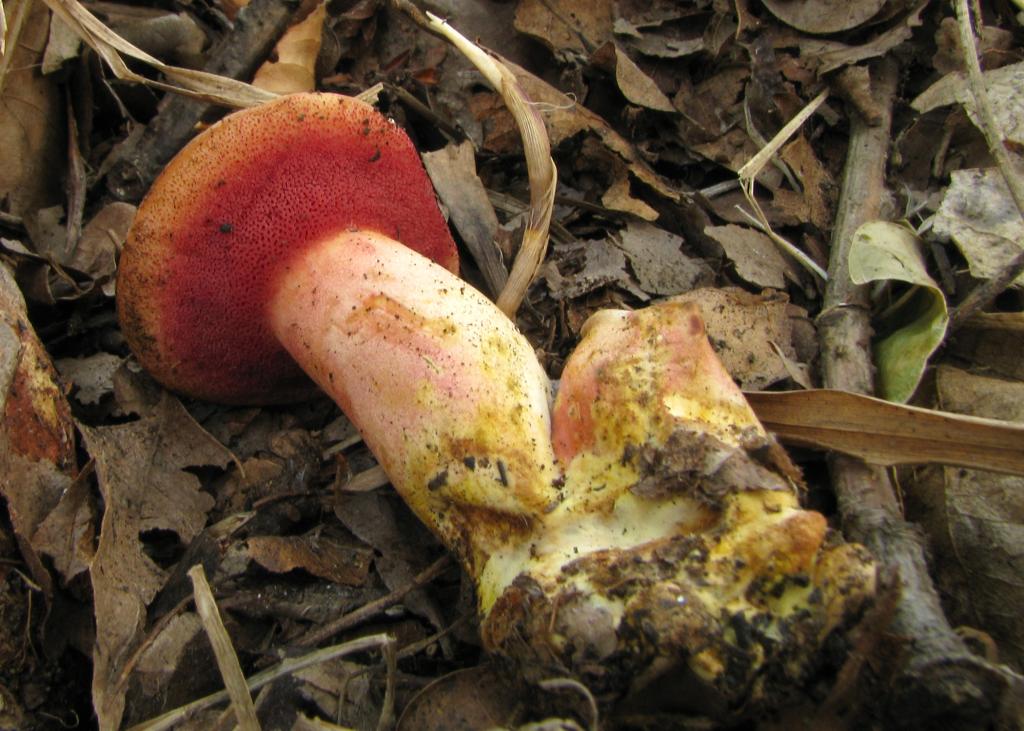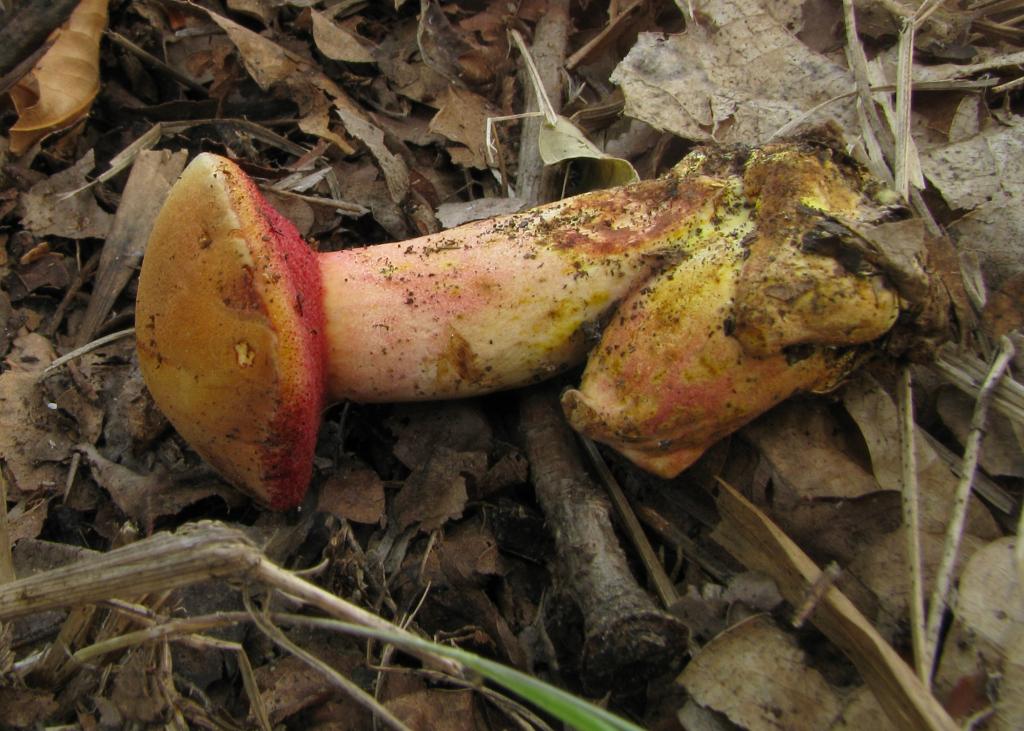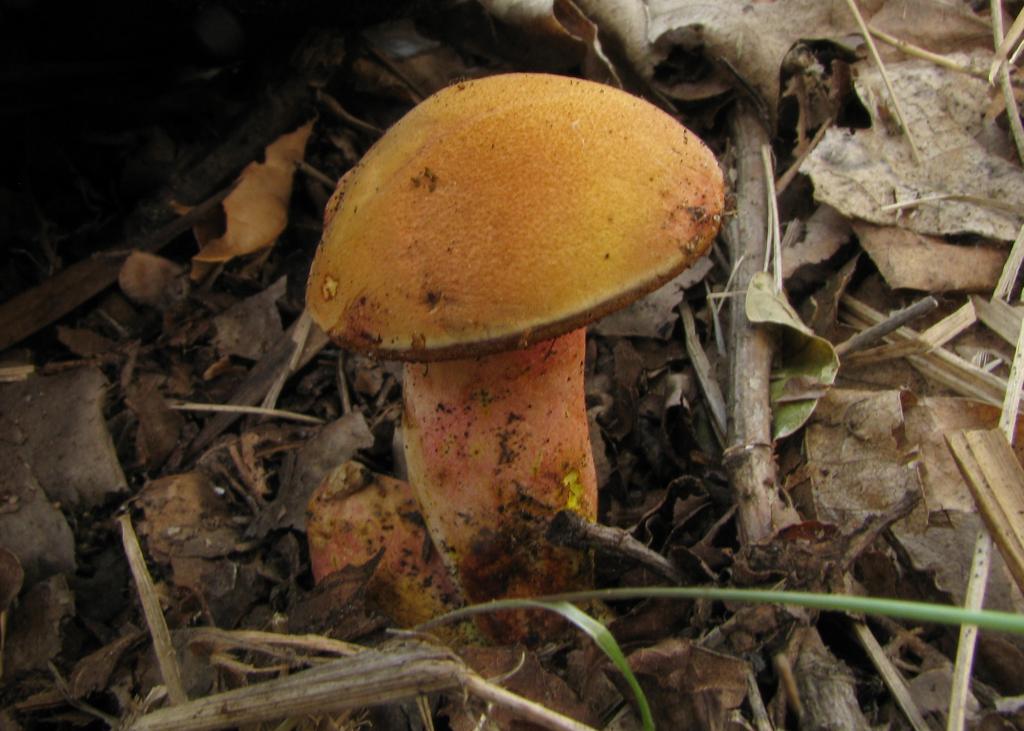- Proposed
- Under Assessment
- Preliminary Assessed
- Assessed
- VUPublished
Rubinoboletus rubinus (W.G. Sm.) Pilát & Dermek
- Scientific name
- Rubinoboletus rubinus
- Author
- (W.G. Sm.) Pilát & Dermek
- Common names
 Рубиноболет рубиновый
Рубиноболет рубиновый rubínovec obyčajný
rubínovec obyčajný rubinski ljepljivac
rubinski ljepljivac hřib rubínový
hřib rubínový Kurzsporiger Röhrling
Kurzsporiger Röhrling Рубіномоховик карміново-червоний
Рубіномоховик карміново-червоний- IUCN Specialist Group
 Mushroom, Bracket and Puffball
Mushroom, Bracket and Puffball- Kingdom
- Fungi
- Phylum
- Basidiomycota
- Class
- Agaricomycetes
- Order
- Boletales
- Family
- Boletaceae
- Assessment status
- Published
- Assessment date
- 2019-03-27
- IUCN Red List Category
- VU
- IUCN Red List Criteria
- C2a(i)
- Assessors
- Svetasheva, T.
- Reviewers
- Brandrud, T.-E. & von Bonsdorff, T.
Assessment Notes
Justification
Rubinoboletus rubinus is an ectomycorrhizal small but conspicuous bolete which is known in the central and south regions of Europe and European Russia. It is very rare throughout its distribution, included in the Red Lists of seven countries and Red Data Book of Russian Federation as well. This thermophilous species inhabits open broadleaved forests with old oak trees mostly in the floodplain communities or parklands of river valley, where it forms mycorrhiza with Quercus. Usually it produces one or two fruit bodies per site, which likely correlates with two to five mature individuals. The total number of all possible localities is estimated to be less than 400, which corresponds with approximately 4,000 mature individuals.With a global population size below 10,000 mature individuals, habitat decline in its extent and quality and a small number of individuals in each subpopulation (less than 1,000), the species is assessed as Vulnerable C2a(i).
Geographic range
This is a European thermophilous species known in the central and south regions of Europe and European Russia (Ainswort et al. 2013, Assyov and Denchev 2010, Curreli and Contu 1988, GBIF 2019, Halama and Szypula 2010, Ivanov 2013, Rebriev et al. 2012, Vasquez 2014). It is mainly occurring in southern temperate to sub-Mediterranean regions.Population and Trends
The number of registered observations/localities is 75: Italy (2 localities), Netherlands (1), UK (45), Spain (1); Germany (3); Slovakia (6), Croatia (1), Czechia (10), Austria (1), Russia (3 - Volgograd and Penza Oblasts, Mordovia Republic). However most of the localities have not been confirmed during the last 30 years, and currently is supposed to be in about 35-40 (GBIF 2019), therefore the species population is considered to be declining. It is included in the Red List in seven countries as CR, EN or VU.
The distribution of Rubinoboletus rubinus was investigated carefully in most countries. Although it is an easily noticed species, there are still a few findings known, hence there are possibly not much unknown localities left. Including the possible unknown localities (5 times more) it is expected that there are approx. 400 localities. Taking into account low fragmentation, the number of mature individuals is calculated to be less than 400x2x5 =4,000 mature individuals (Dahlberg amd Mueller 2011).
The total area of oak forests in Russia have decreased about 20% from 1966 (Grigorjev et al. 2000), in a period of time of 50 years or three generations.
Population Trend: decreasing
Habitat and Ecology
Rubinoboletus is a symbiothrophic fungus, mycorrhizal with Quercus. It inhabits only open broad-leaved forests with old oak trees, including floodplain oakeries, parklands of river valleys, on rich soil often amongst short grass under isolated large trees. It is mostly found in moister oak forest, and probably mixed forest with Salix and Populus. Usually only one or two fruitbodies are found in each site.Threats
Loss of habitat due to deforestation and change of management of parklands; habitats degradation due to intensive land use. Climate change could pose a future threat as it would change the habitat conditions making them drier.Conservation Actions
Required conservation actions:The protection of known localities, monitoring of the state of habitats and populations. Establishment of important fungal areas with a high protected status.
Research needed:
The search for new localities in suitable habitats, clarifying of ecological preferences and threats; and determination of the optimal ways of protection.



